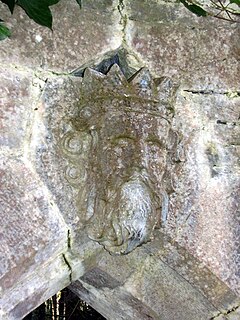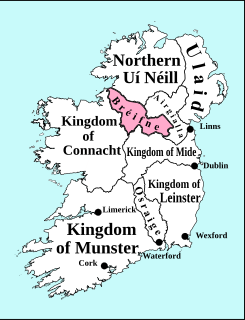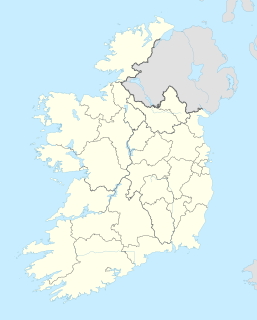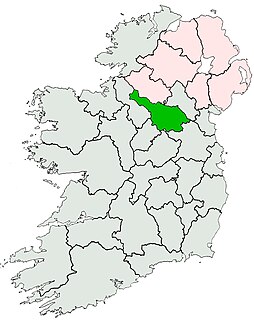
Ruaidrí mac Tairrdelbach Ua Conchobair was King of Connacht from 1156 to 1186, and High King of Ireland from 1166 to 1193. He was the last High King of Ireland before the Anglo-Normans invaded Ireland.
The Second Battle of Athenry took place at Athenry in Ireland on 10 August 1316 during the Bruce campaign in Ireland.
Toirdhealbhach Mór Ua Conchobhair anglicised Turlough Mór O'Connor / O'Conor, was King of Connacht (1106–1156) and High King of Ireland.
The Ó Duibhgeannáin clan were a family of professional historians in medieval and early modern Ireland.
Brian Luighneach Ua Conchobhair, Prince of Connacht, died 23 May 1181.

The Grianan of Aileach is a hillfort atop the 244 metres (801 ft) high Greenan Mountain at Inishowen in County Donegal, Ireland. The main structure is a stone ringfort, thought to have been built by the Northern Uí Néill, in the sixth or seventh century CE; although there is evidence that the site had been in use before the fort was built. It has been identified as the seat of the Kingdom of Ailech and one of the royal sites of Gaelic Ireland. The wall is about 4.5 metres (15 ft) thick and 5 metres (16 ft) high. Inside it has three terraces, which are linked by steps, and two long passages within it. Originally, there would have been buildings inside the ringfort. Just outside it are the remains of a well and a tumulus.

The Kingdom of Breifne or Bréifne was a medieval overkingdom in Gaelic Ireland. It comprised what is now County Leitrim, County Cavan and parts of neighbouring counties, and corresponds roughly to the Roman Catholic Diocese of Kilmore. It had emerged by the 10th century, as a confederation of túatha headed by an overking drawn from the Uí Briúin Bréifne.
Events from the year 1347 in Ireland.

Glangevlin is situated in the northwest of County Cavan, Ireland, in the townlands of Gub (Glangevlin) and Tullytiernan, at the junction of the R200 and R207 regional roads. It is surrounded by the Cuilcagh Mountains and borders the counties of Leitrim and Fermanagh.
Ruaidrí Ua Conchobair, called Ruaidrí na Saide Buide was King of Connacht, perhaps twice.

Ballymcgovern is a village and townland in County Cavan, Ireland. It lies on the border with County Leitrim, within the parish of Templeport and barony of Tullyhaw on the Ballinamore to Ballyconnell road, the regional R205 road (Ireland).
Eaghra Poprigh mac Saorghus, eponym and ancestor of the clan Ó hEaghra, King of Luighne Connacht, died 928.

The surname McGovern, is of Irish origin and is found predominantly in the counties of Cavan, Fermanagh and Leitrim.
Tomás mac Brian Breaghach Mág Samhradháin, was chief of the McGovern Clan and Baron or Lord of Tullyhaw barony, County Cavan from before 1325 until his death in 1340.
Niall Mag Samhradháin, was chief of the McGovern Clan and Baron or Lord of Tullyhaw barony, County Cavan from 1340 until his death in 1359.
Maghnus Ruadh Mág Samhradháin, the Second, was chief of the McGovern Clan and Baron or Lord of Tullyhaw barony, County Cavan from 1393 until his murder in 1408.
Macraith Mág Tighearnán was chief of the McKiernan Clan and Baron or Lord of Tullyhunco barony, County Cavan from c.1240 until his death in 1258.
Cú Connacht Mág Tighearnán was chief of the McKiernan Clan of Tullyhunco, County Cavan from 1383 until his death in 1412.

Cashelmore, also called Clogher Stone Fort, is a stone ringfort (cashel) and National Monument located in County Sligo, Ireland.
Seltanahunshin is a townland in the civil parish of Oughteragh, barony of Carrigallen, County Leitrim, Ireland.






